2024/04/11
A report from TAIPEI CYCLE 2024, the largest of its kind in Asia, which has evolved even further!
TAIPEI CYCLE 2024 is a huge bicycle exhibition that will take place from March 6 to March 9.
This time Discover Ride went to experience ‘Ride Together’, an exhibition and related-party-only event.

The Taipei Nangang Exhibition Hall (TaiNEX) attracted 3,500 booths and 950 exhibitors from 30 countries, including well-known sports bike manufacturers such as Merida and Giant, as well as a new area dedicated to e-bikes, which have been on the rise in recent years.
The slogan for the exhibition is “Envision A Better Cycling World.”
Taking this slogan as a starting point, the event is developed into four themes: “Micromobility (short distance, small number of people, small capacity transportation vehicles),” “Green Action (environmental initiatives),” “Startups & Innovation,” and “Culture & Lifestyle” to present the image and concrete path to a better world created by bicycles through booths, workshops and products.
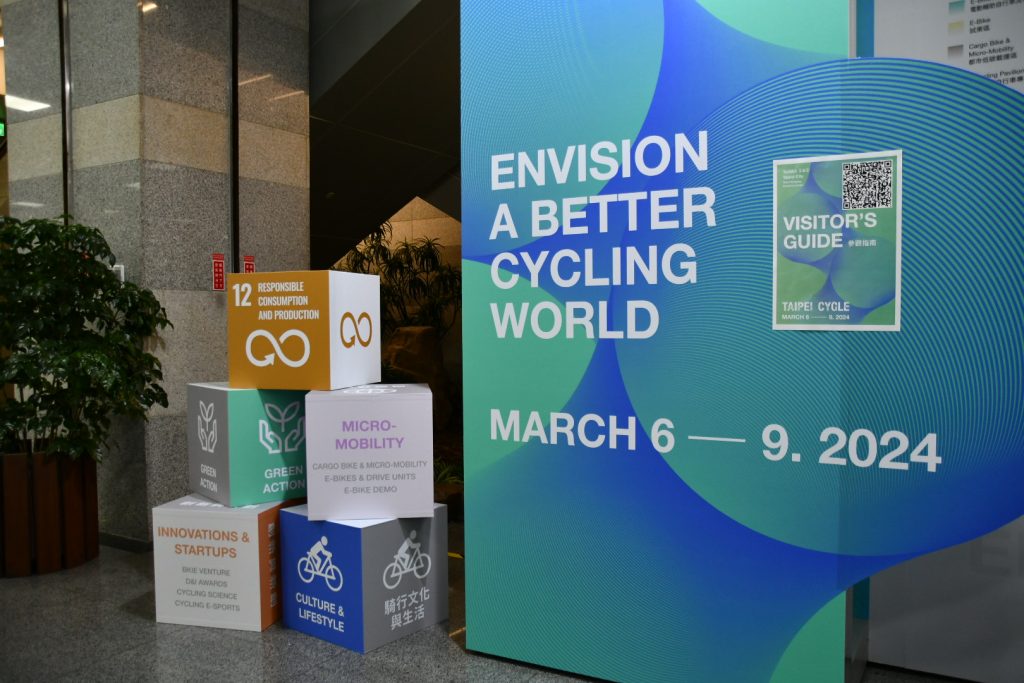
…and started with an entrance so small that it bears no resemblance to the grand scale of the project.
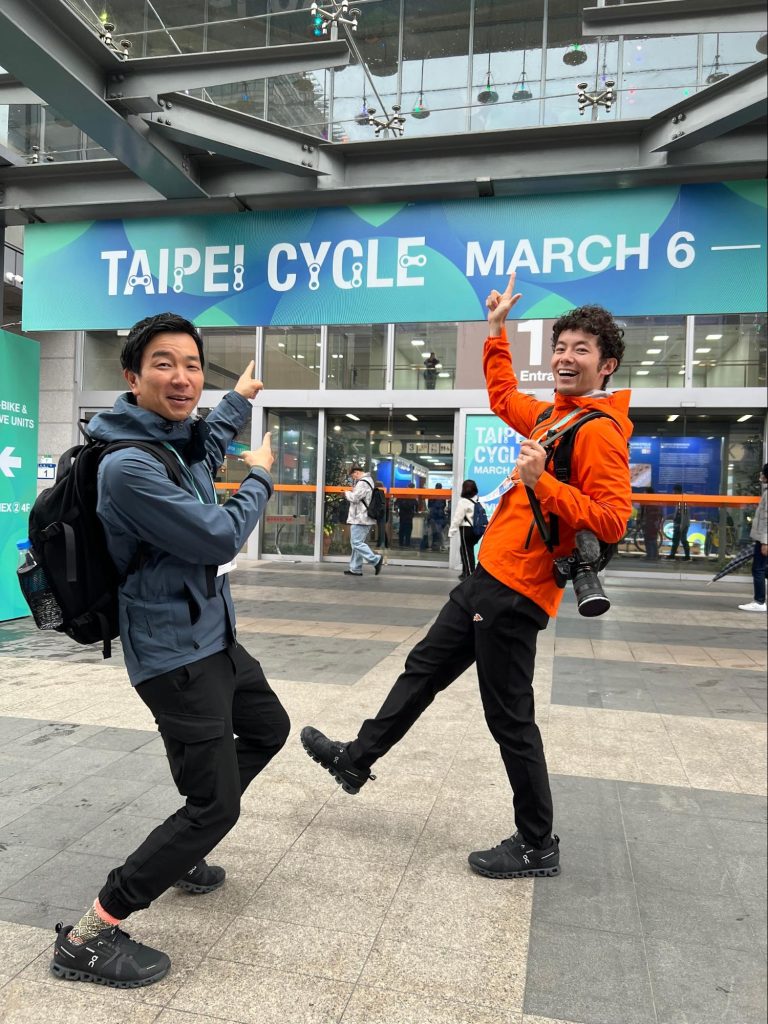
First of all, the entrance is lined with award-winning products from the Taipei Cycle D&I Awards (Taipei Cycle Design & Innovation Awards) held by the sponsoring Taiwan Trade Center and the Taiwan Bicycle Exporters Association.

Lightweight design, intelligent functionality, and carbon reduction are all important aspects of the products, from the selection of materials to the manufacturing process.
E-Bike, an aerodynamic one-piece frame, not yet released in Japan
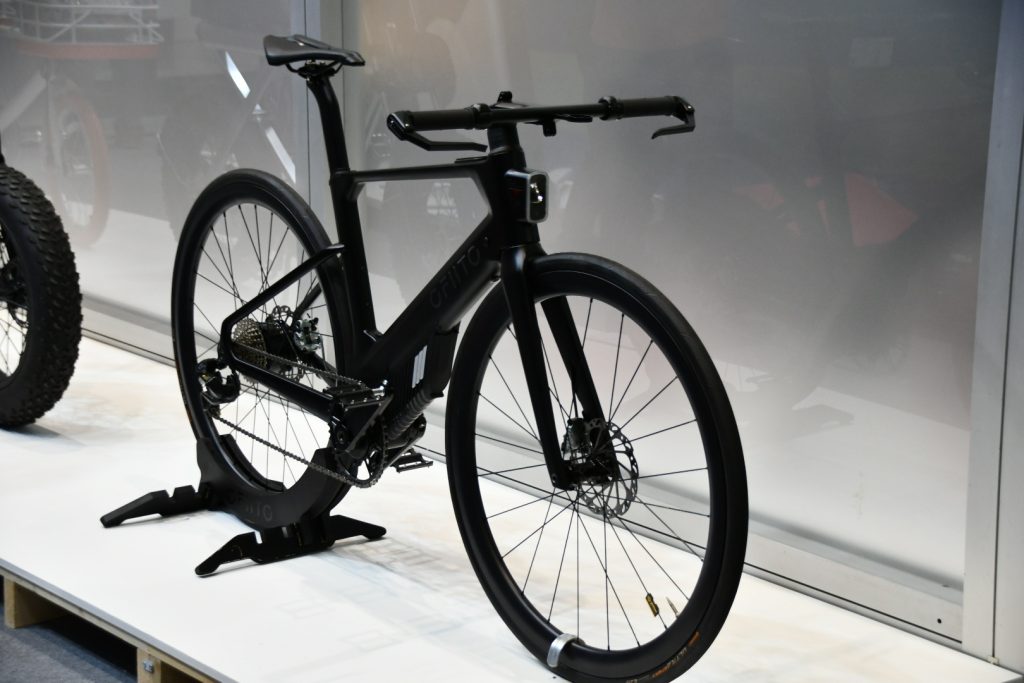
E-bikes are also functional in terms of transporting goods and easily moving short distances. The cargo bike type is still very rare in Japan.

This cargo bike was built to European road width standards and is foldable (!). The bike folds up to meet European road width standards.
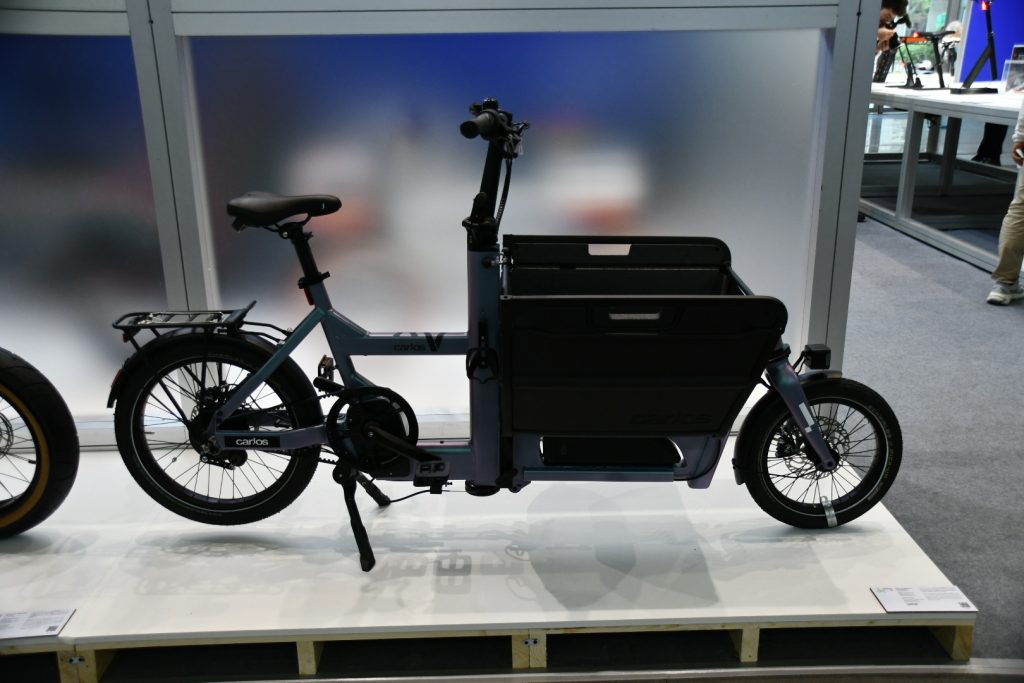

The mounting system that smartly accommodates the cyclecomputer is casually integrated into the bell.

The second day was mainly for business meetings, and although there were no public tours yet, the venue was quite crowded.
We started our tour on the first floor of Hall 1.

The KPLUS booth caught our attention in this area. This high-end helmet brand is popular for its sophisticated design and subtle colors.

Eyewear is available this year. The arms and nose pads are wire-fitted and movable, allowing the fit to be adjusted as desired.

Wear it with “Aura,” a helmet with an impressive design that resembles a spider’s web. Aura is priced at US$260 (around 40,000 yen) and will be available in Japan from this summer.

Tsucchi and I, who often go bikepacking, are interested in the saddlebags that make use of discarded tires in their designs.
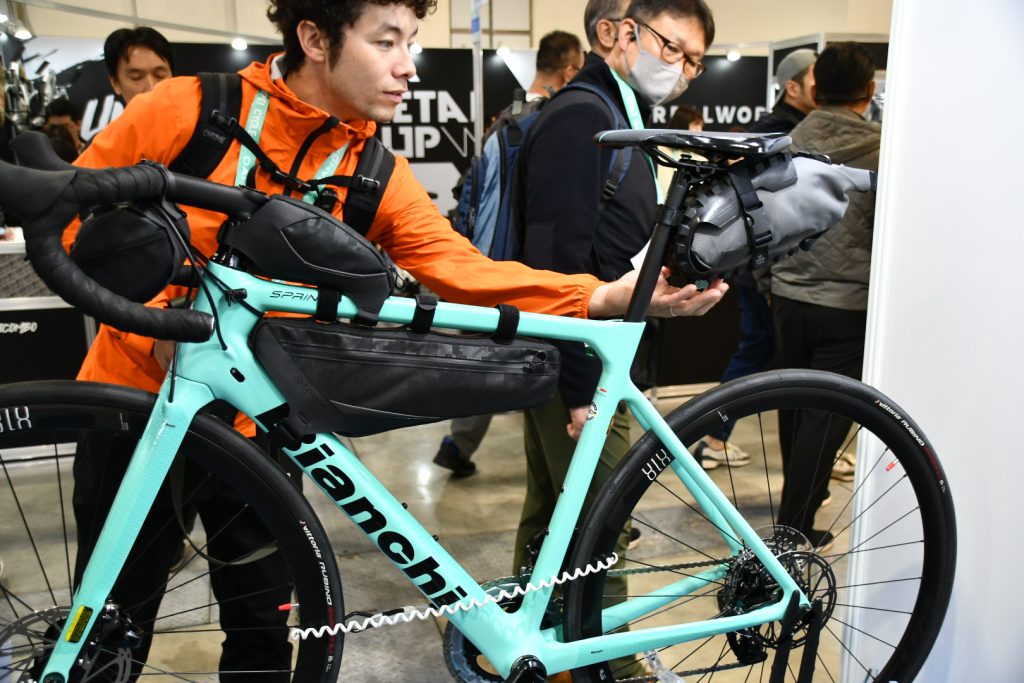
The inner bags are all made of PET material, which eliminates the need to separate each part for recycling. Prototype of a sustainability-conscious item.
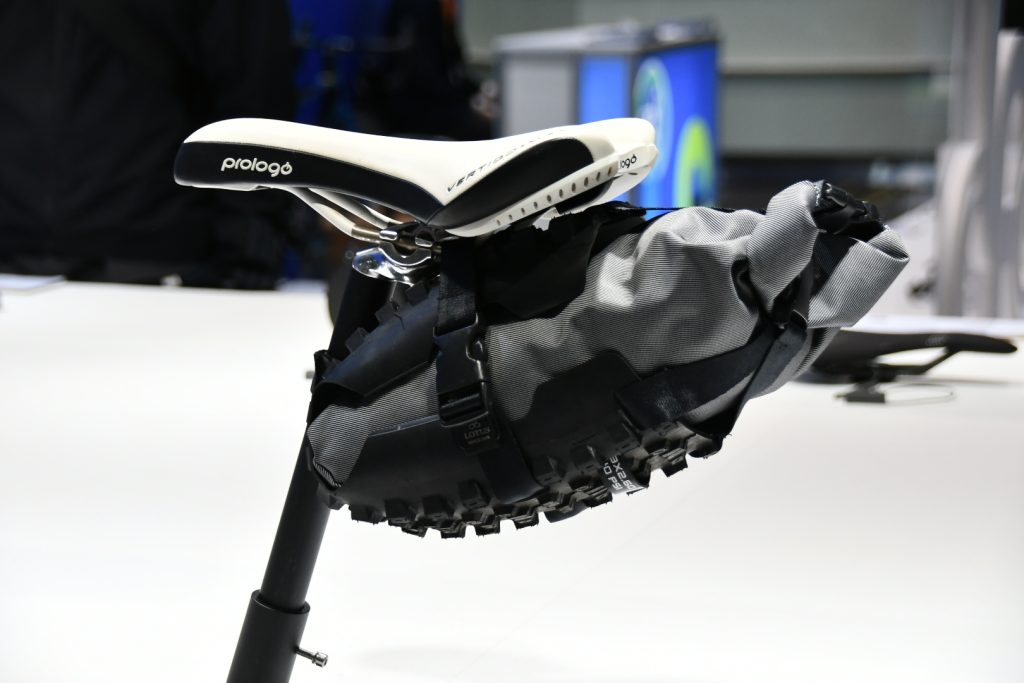
At the ready go booth, a D&I award-winning manufacturer of cyclocomputer mounts, we found a saddlebag that does not block the light from the taillight when mounted. The transparent parts are stylishly integrated.
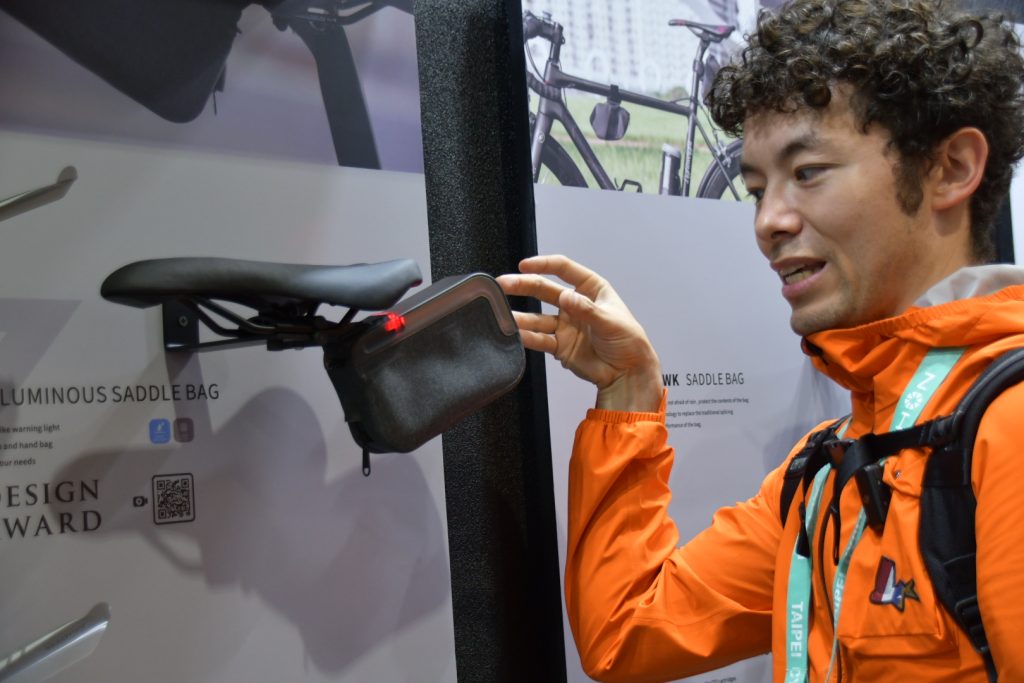
Just looking around the ground floor area where parts manufacturers are lined up is a considerable amount of information. My eyes and brain could not keep up. I went to the 4th floor, feeling slightly dizzy.
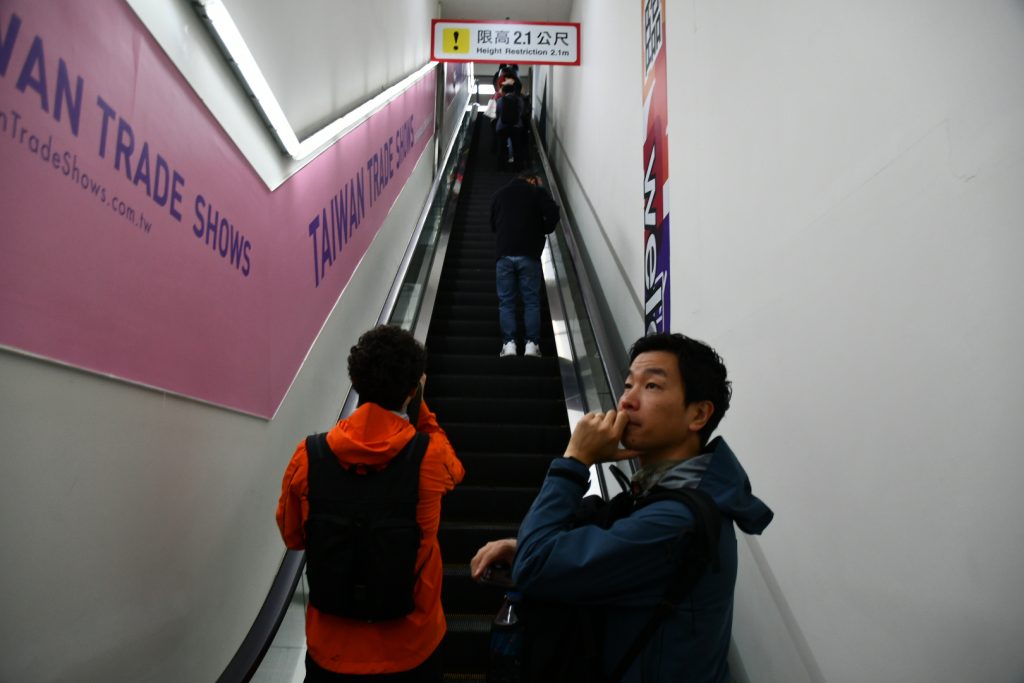
In the middle of the fourth floor, there is a large selection of Taiwan’s leading manufacturers, including Merida, Giant, Shift, and Dahon, with Shimano and Pinarello also lined up in the main area.
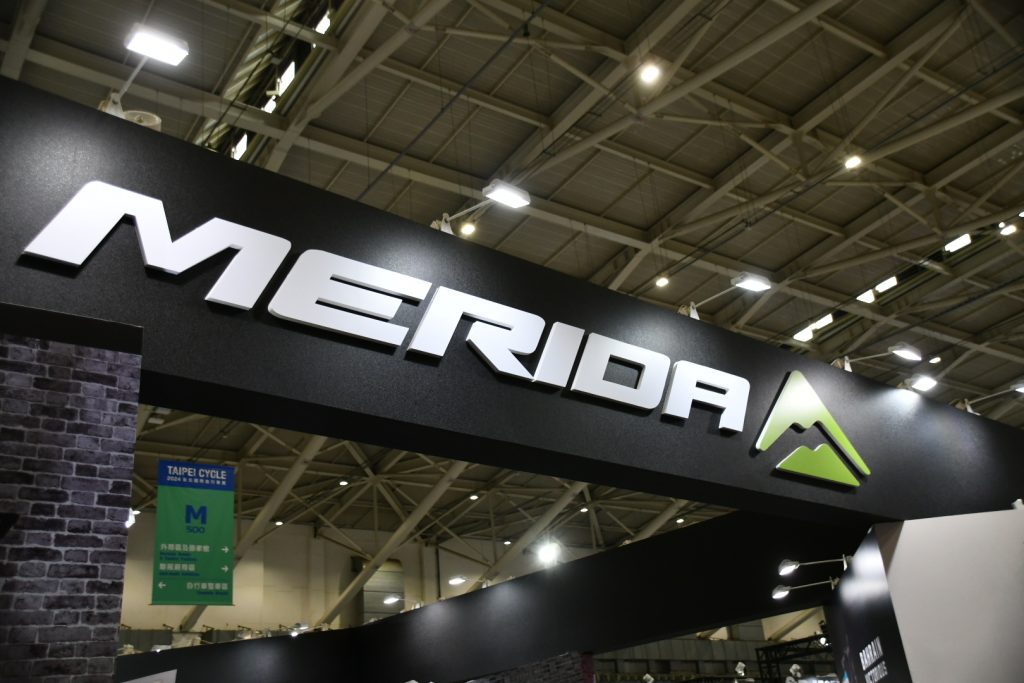
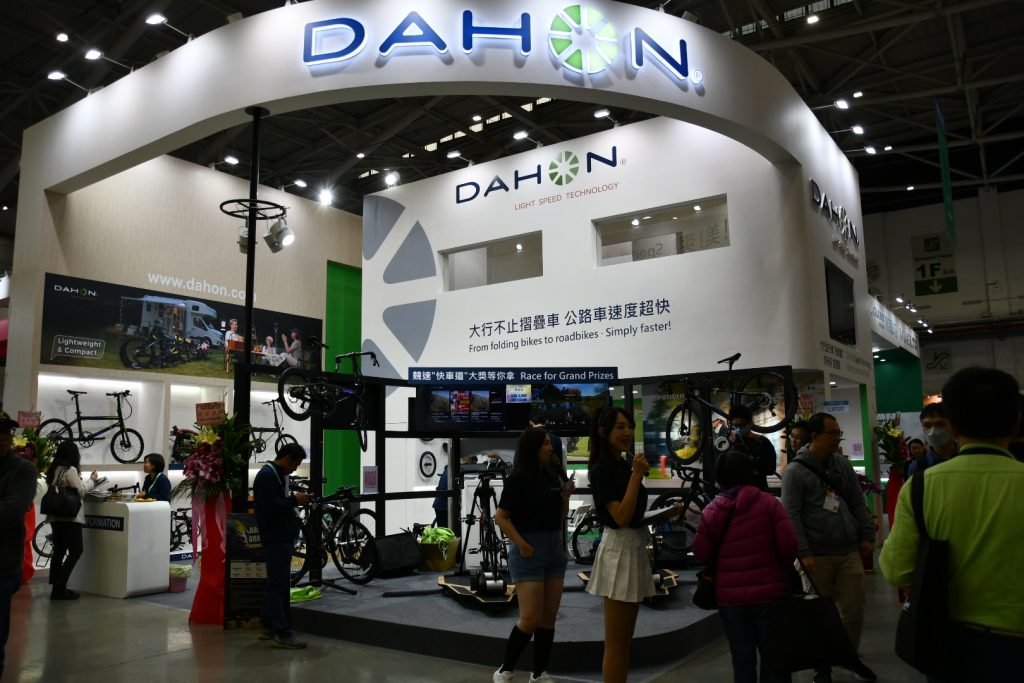

The TCR Advance graces the front of the Giant booth.
This is a frame with an integrated seat post, a rarity in recent years.
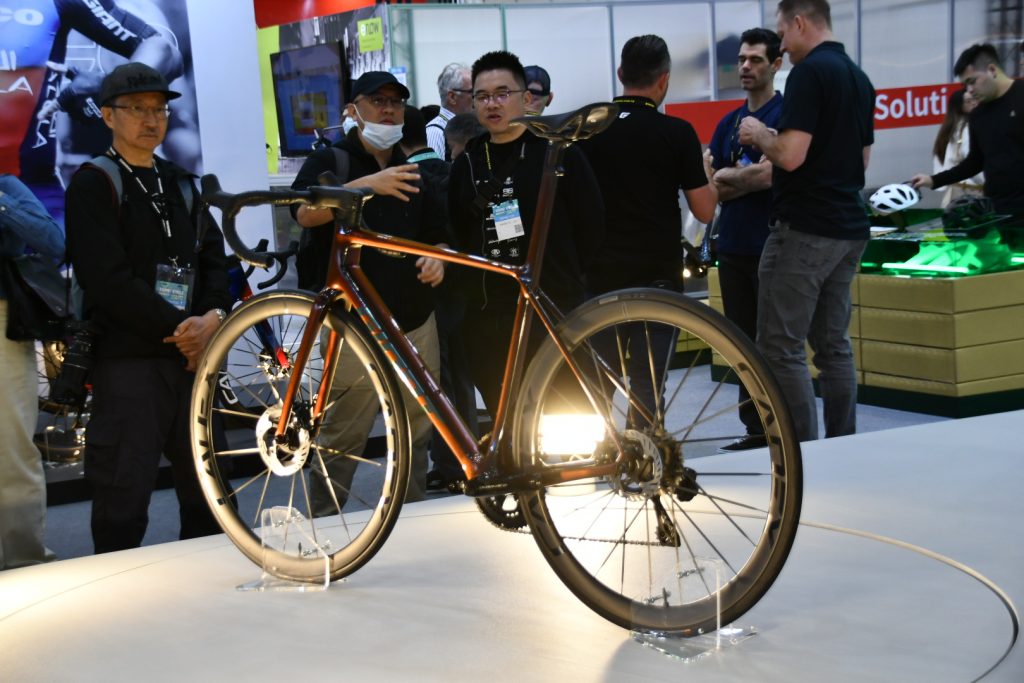
Cutting the seat post of a nearly 2 million yen bike to fit your size… just imagining it makes me nervous.
Although eco-friendly bicycles have always been eco-friendly, the manufacturing process of these bicycles was also highlighted at this year’s exhibition.
The keyword on Giant’s booth is “a Trail to Zero,” which expresses the company’s commitment to reducing its negative impact on the environment to zero.
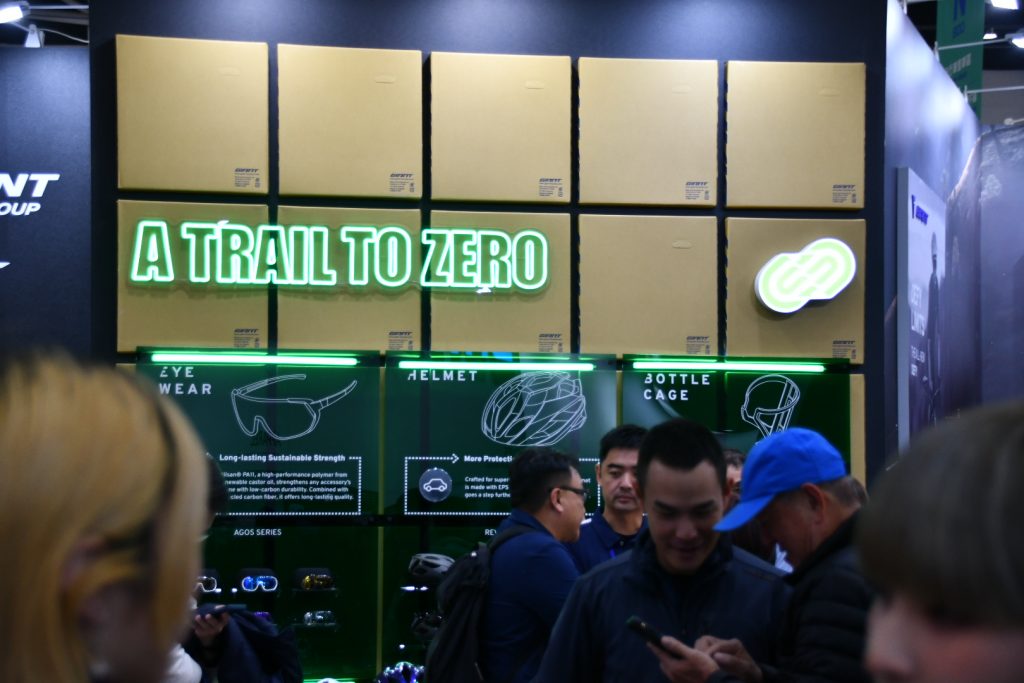
This TCR also displays the carbon footprint (a notation of the amount of greenhouse gases emitted in the manufacturing process in terms of carbon dioxide equivalent).
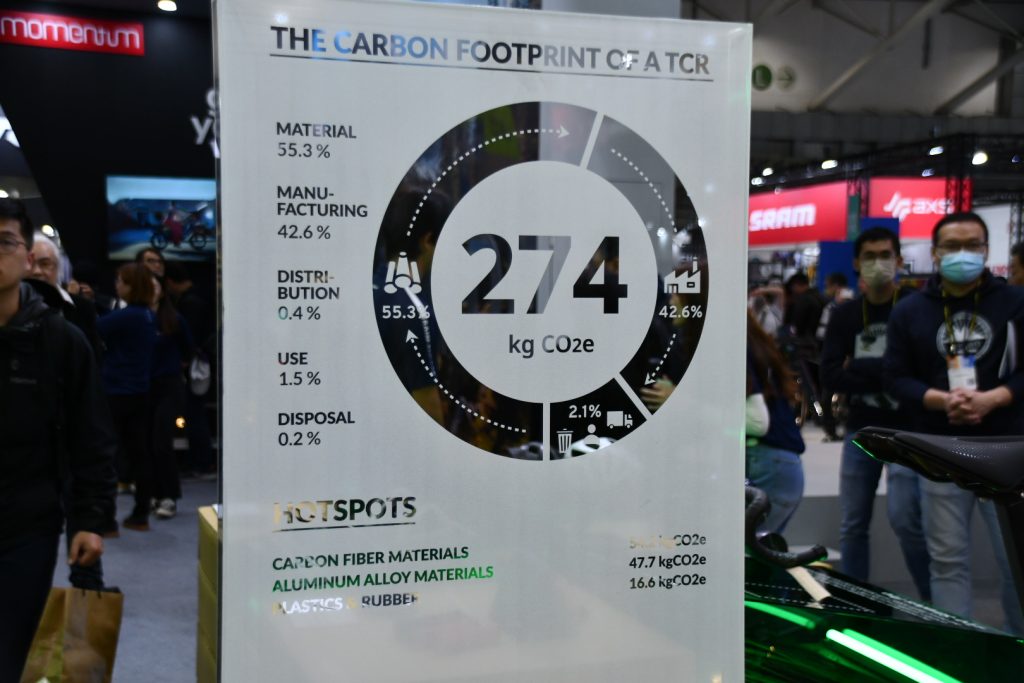
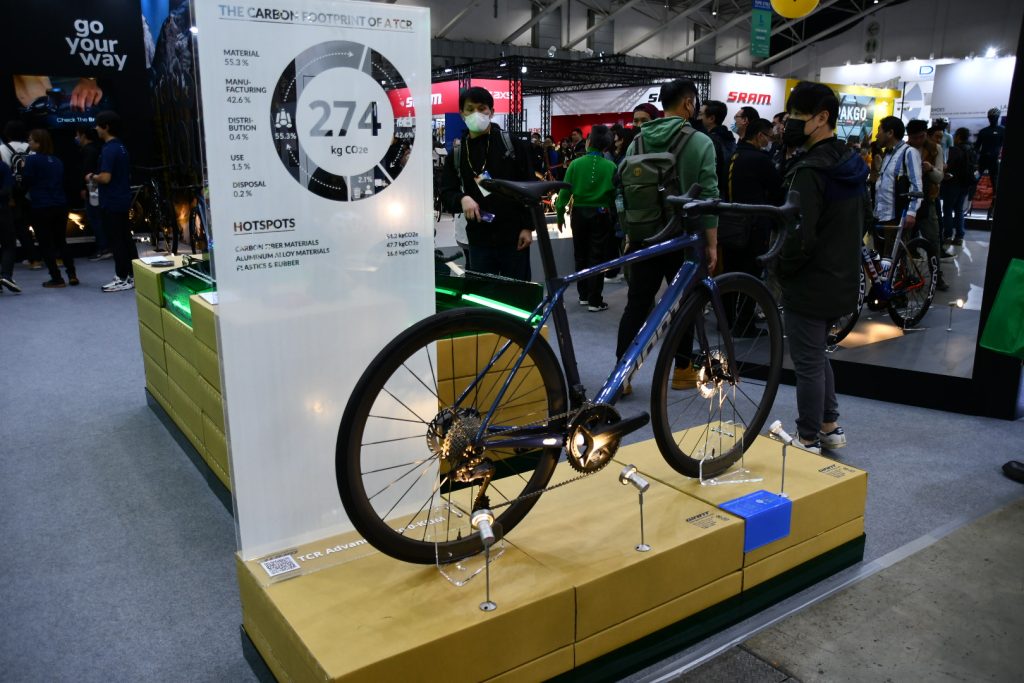
The helmet components are also made of materials, 50% of which are reused Styrofoam.
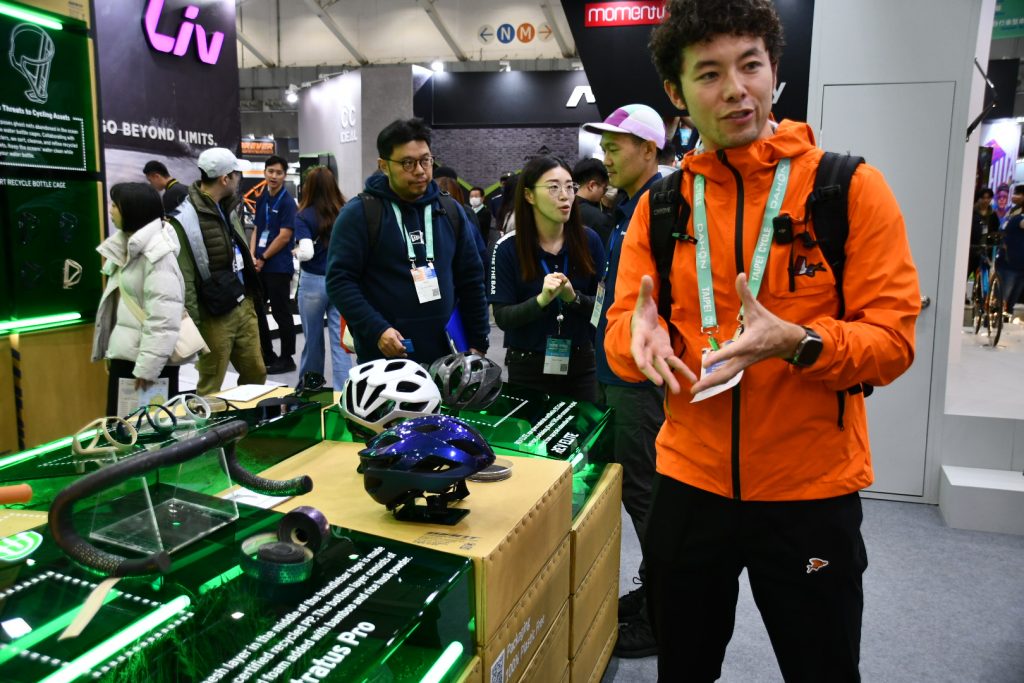
Plastic-free packaging materials that are easy to recycle are effectively utilized as fixtures and displayed in an ingenious way.

If you look closely, you can see that the exhibition signage is also made of corrugated cardboard base.
The cross section daringly announces “green action” from the selection of materials.

As I was reporting on GIANT, Linda, who helped us in the Tainan area of our Taiwan round-trip, approached me!

Linda is one of the most popular bicycle influencers in Taiwan today. She is busy MCing all day long on the live stage at trade shows and making the rounds to introduce each booth.

The beautiful coloring of the exhibited bikes at the TRIGON booth, a Taiwanese bicycle manufacturer that is rarely seen in Japan, is eye-catching.
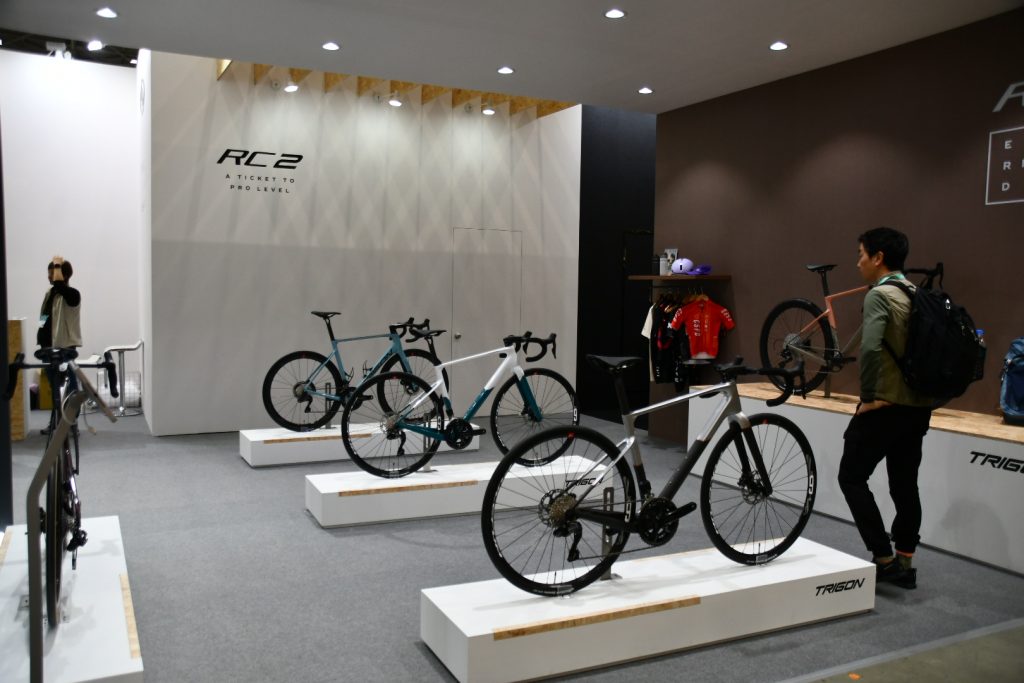
Some have intricate patterns that look like the aurora borealis,
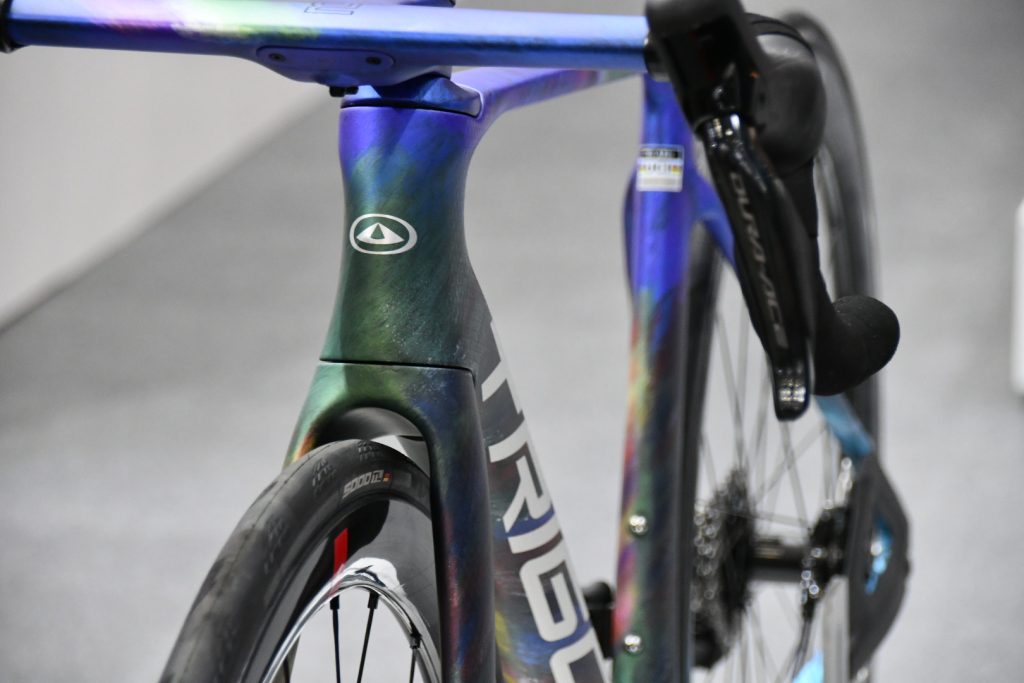
While others have a nice, two-tone design in exquisite, nuanced colors that express mountain ranges.

We will be able to rent a TRIGON rental bike at this year’s Ride Together event, and I am looking forward to seeing what it is like to ride.
Other bikes that caught our attention this time, apart from the sport bikes, were “tough, high-capacity” transportable bicycles.
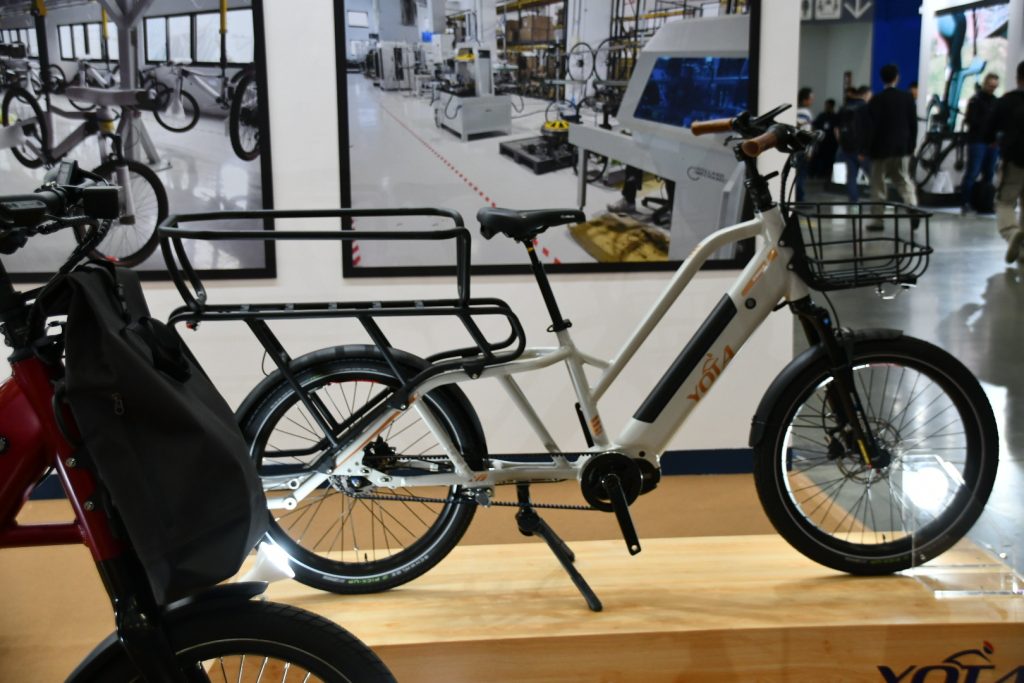

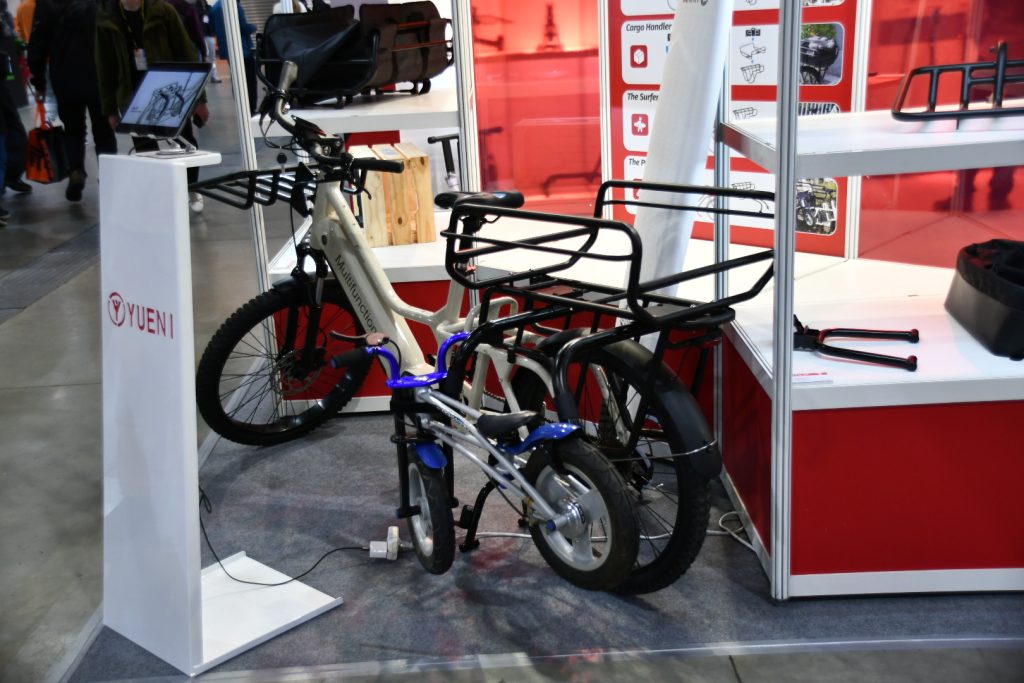

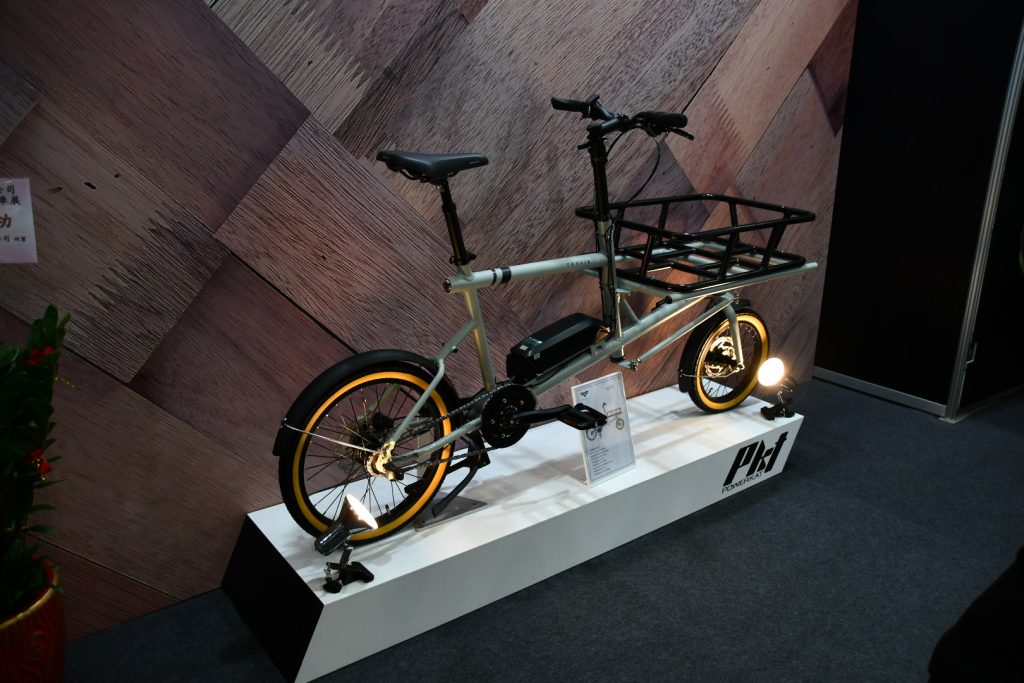

As the E-Bike’s battery evolves into a smaller yet more powerful and free form, the amount of cargo it can carry is scaled up, and the design of the vehicle body develops into a variety of styles.
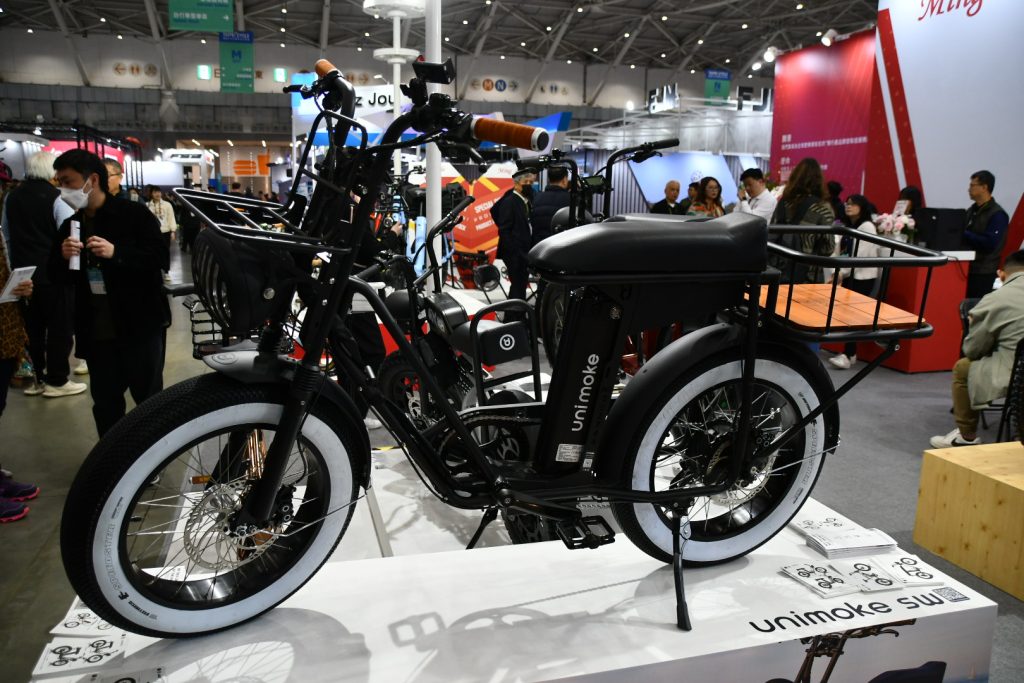
There are many products that seem to be reconstructing the concept of “bicycle” to the point where the boundaries between scooters and motorcycles are becoming blurred.

Some types have basically the same feel as the earthenware pots carried by Tsucchi on the Omiya E-Bike trip (just a bit cooler) and also have power supply functions, such as charging cell phones.

Recently in Japan, large-capacity batteries for transporting items in times of disaster have become popular, and these bicycles may be able to serve as emergency equipment that can both transport luggage and supply electricity.
Many of the bicycles had a three-wheel structure to stabilize them even when loaded with heavy luggage.
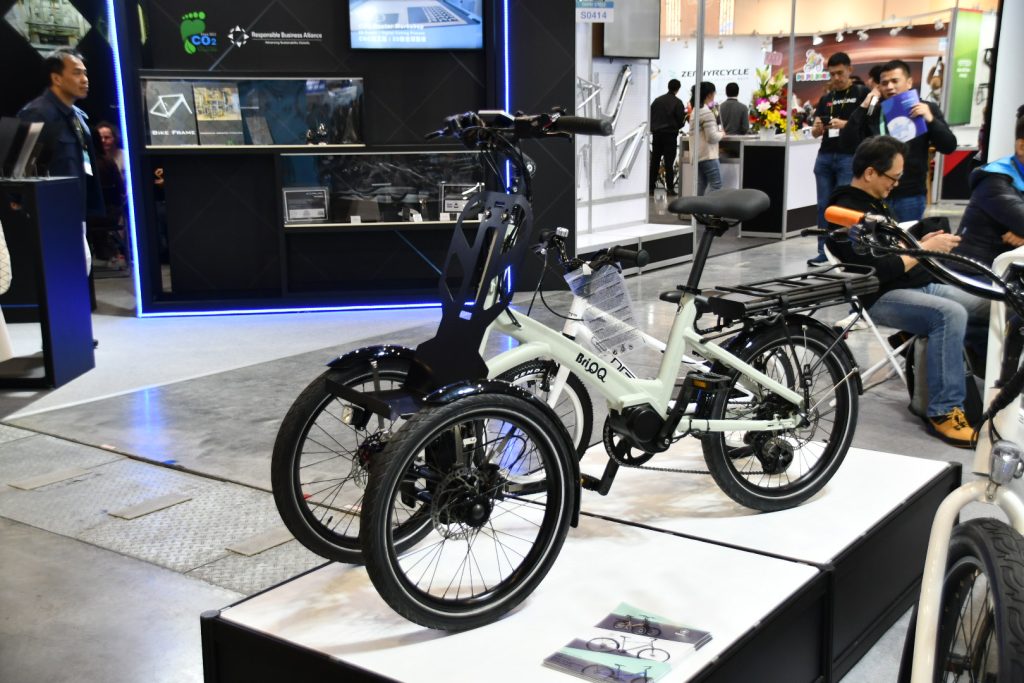


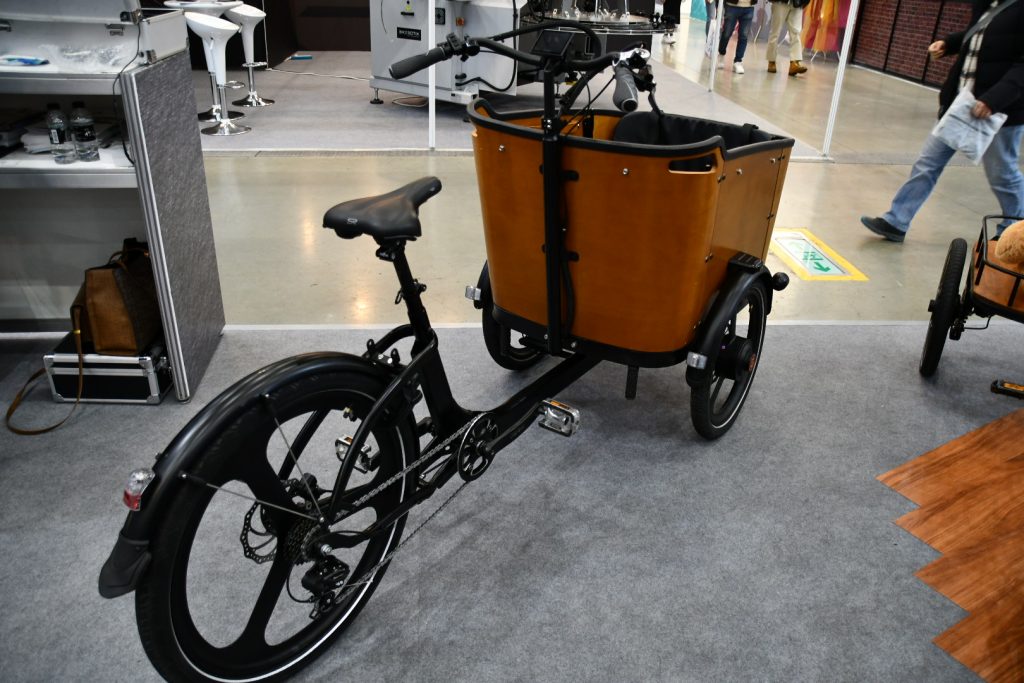
This is an experimental product. It looks like an electric kickboard, but it has two wheels in the front and is more stable. It can carry luggage and a human being, and can get over bumpy surfaces with ease.
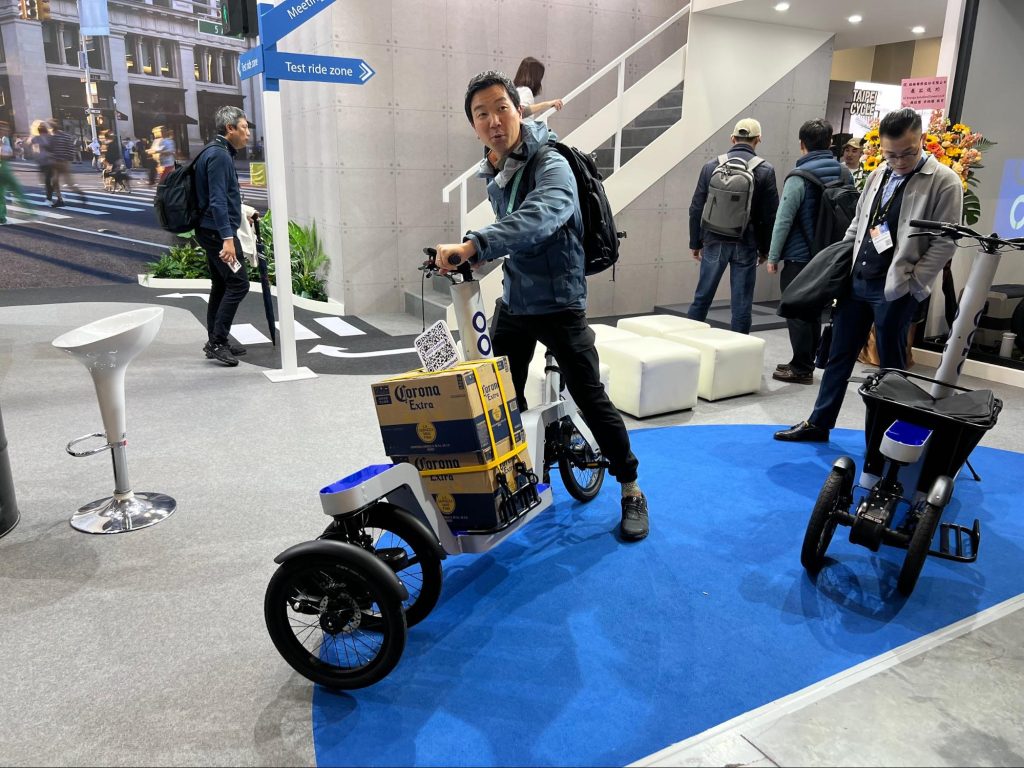
As Sam, who joined us in the afternoon, and I were making our way around the venue, we ran into our first international follower!
The person who approached us was Tony from Singapore.
He had come to Taiwan after watching our Taiwan round-trip video series.
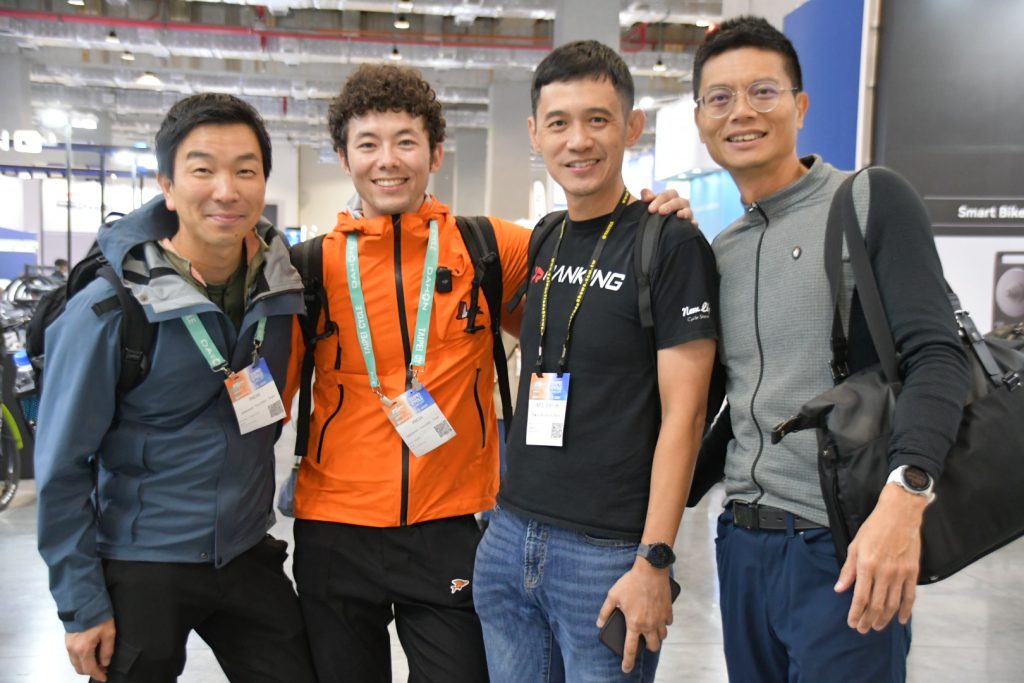
The OFllTO bikes were the most exciting in the E-Bike area.
The slightly smaller frame, made to fit the Asian body, is an aero-like one-piece, despite being a road bike.

The contrasting two-tone coloring and straight lines of the handlebars will definitely stand out when ridden on the street.
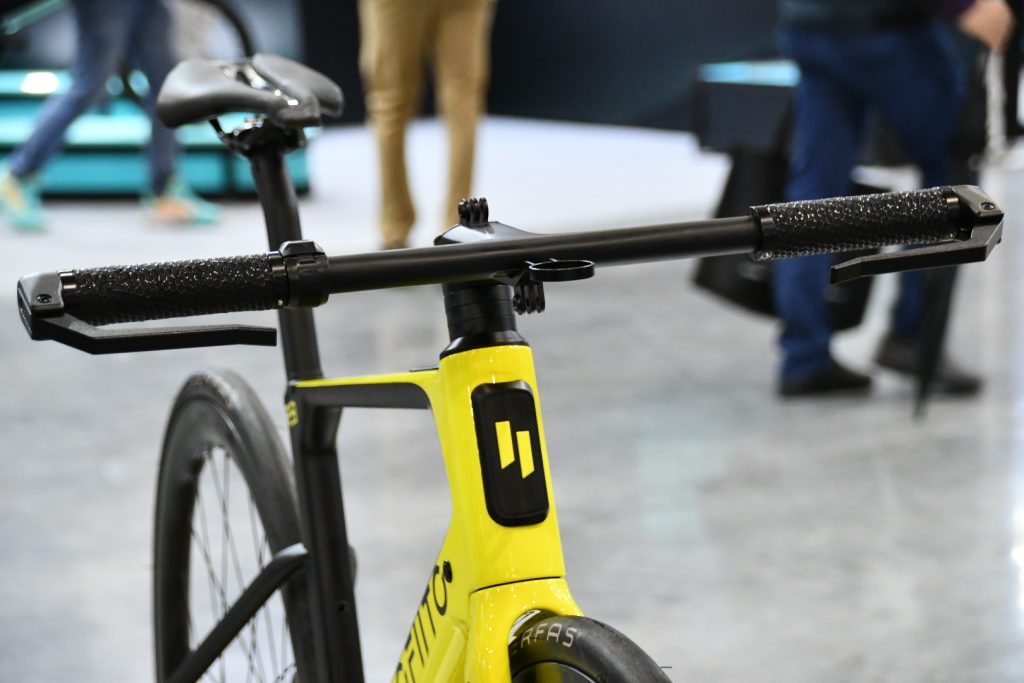
This bike, even the regular body without the battery, looks like an e-bike, with little difference in design.
The part that would originally contain the battery is used as a space for small items.

The design trend of recent sports bikes has been “how to make an E-bike look like a regular bike,” but here the concept has been reversed. The concept of “E-bike as a design base, but without battery” is one of the most free and unique ideas.
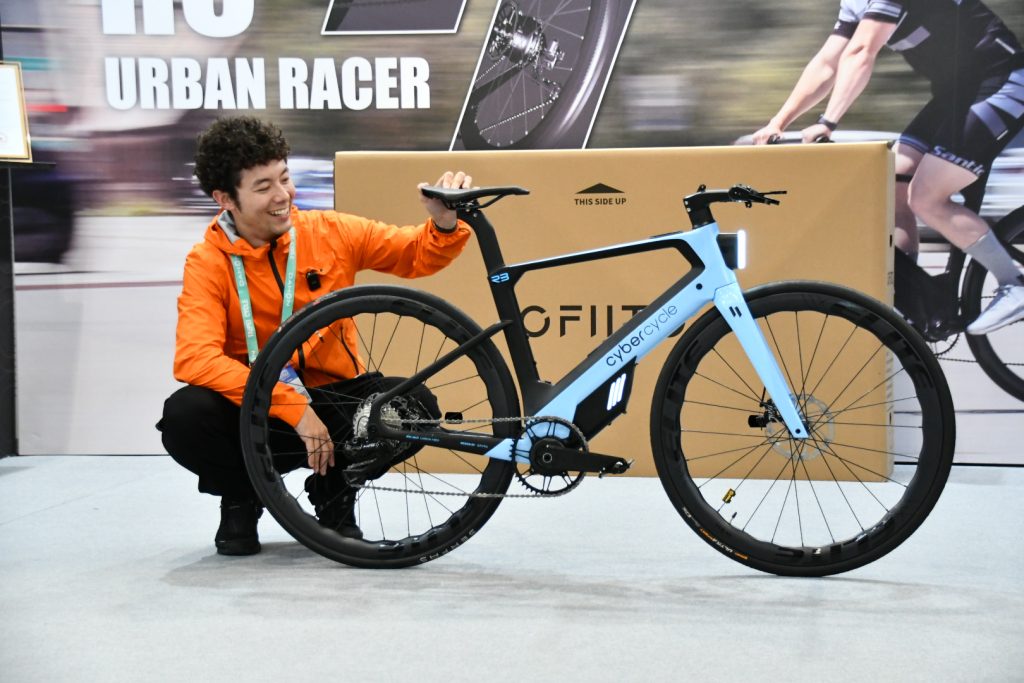
Incidentally, it is quite light: the E-Bike weighs about 12 kg, while the non-E-Bike weighs less than 10 kg. The price is also almost the same, about 500,000 yen for the E-Bike and 400,000 yen for the (not-) E-Bike.。
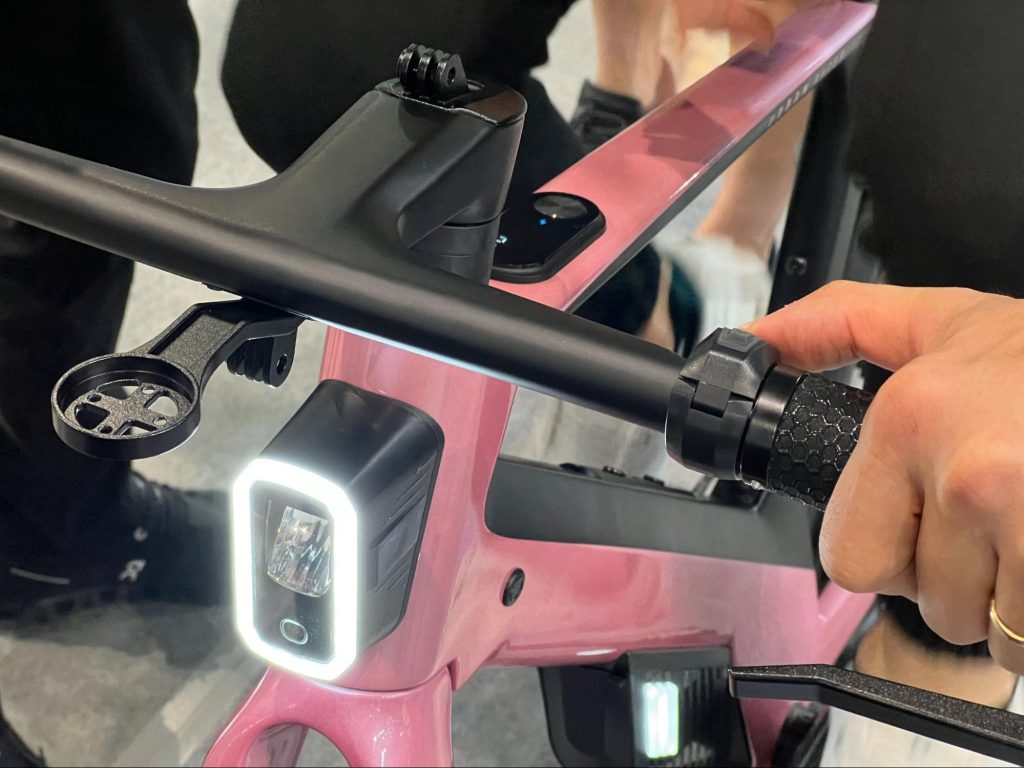
With a light built in, it seems that many people would choose the E-Bike for the 100,000 yen difference.
It is not yet available in Japan, but they are looking for sales opportunities, so we may see it in Japan in the near future.
Lastly, the group’s eyes were drawn to this vehicle made mostly of recycled plastic parts.
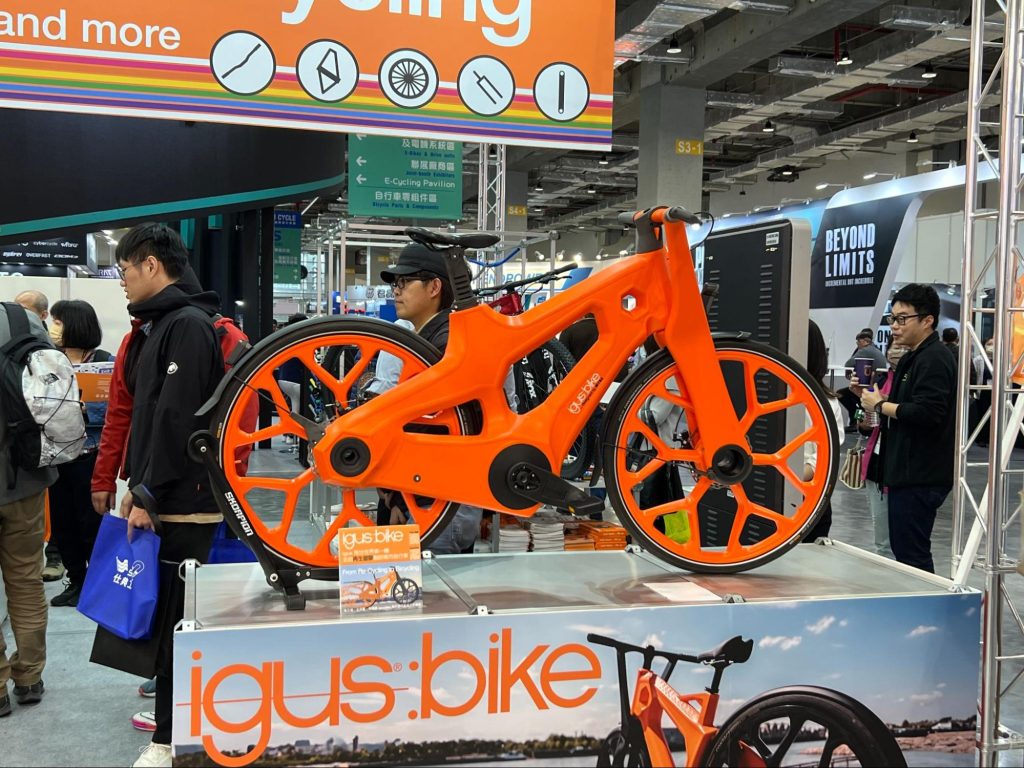
Putting aside the weight, or lack thereof, the spirit of challenge to give shape to an idea and bring it out into the world is wonderful.
It seems to be resistant to rain and water, and has other strengths not found in conventional bicycles.
The test-ride corner was also very popular.
COYOTE, which OEMs the internal mechanisms of e-bikes to major manufacturers, had a vehicle available for test rides that allowed visitors to experience their latest unit. It was incredibly sophisticated and incredibly popular at the test-ride area, as it is super lightweight and has a battery and motor on board.
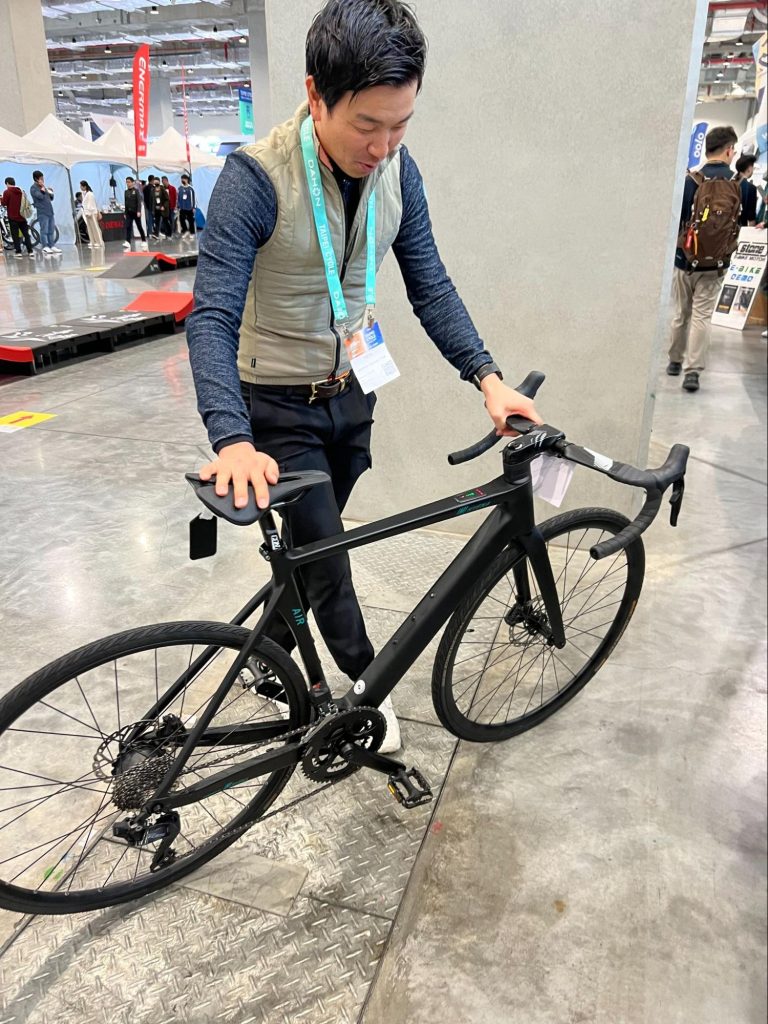
The quietness and smoothness of the ride is addictive once you get on it. Even Tsucchi couldn’t help but murmur, “It’s as if I’m being pushed along by a Taiwanese tailwind.”
The natural acceleration that accompanies pedaling perfectly creates the illusion that one’s leg strength has improved.
There is also a battery-powered running bike for children

and a two-seater type inspired by rehabilitation training (it would be fun to have one in a tourist spot!). ), and more. The variety of bicycles available for test rides is so wide-ranging that it will make you wonder what a bicycle is, and shake your image of the bicycle to its very foundations.
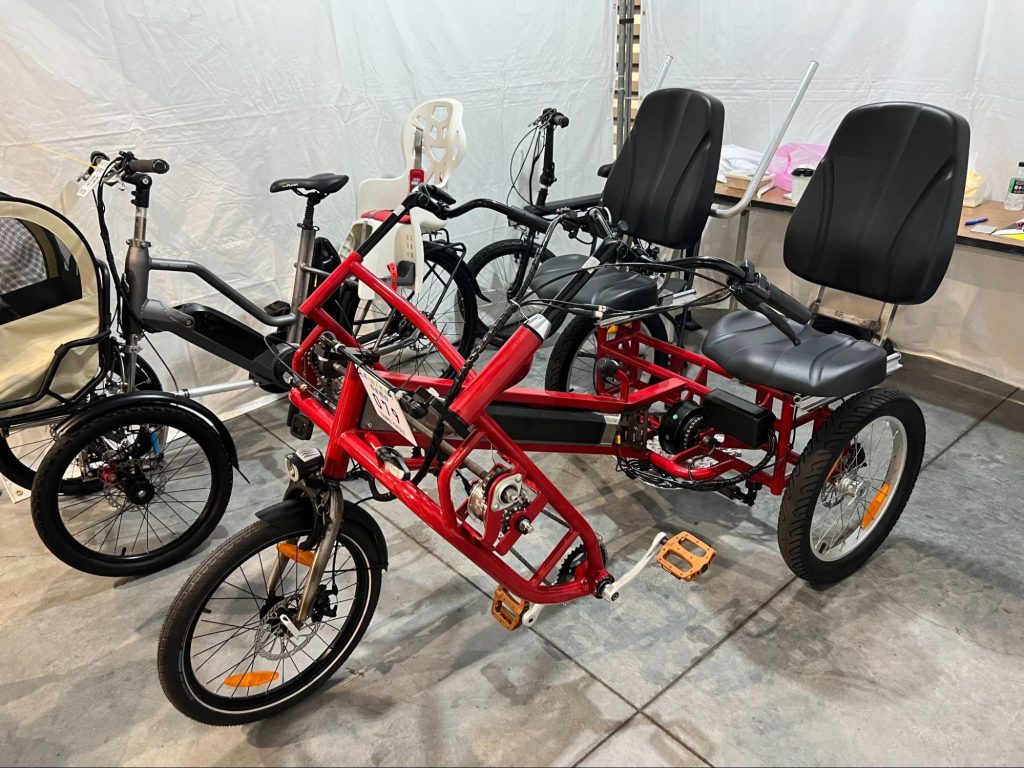
Summary
TAIPEI CYCLE is the largest bicycle show in Asia and is packed with huge Asian bicycle manufacturers, cool brands that have not yet been introduced in Japan, and a variety of parts manufacturers and services.
This year, Asia’s largest exhibition has evolved even more excitingly, incorporating new ideas and perspectives.
While most bicycle events in Japan focus mainly on sport bikes and leisure activities, this year’s event also focused on “infrastructure that can be expanded to other countries around the world”.
It was a wonderful opportunity to actually visit the venue and experience firsthand the further pursuit of ways to be closer to people and the environment, as well as the changes in the way bicycles are used, made, and the value the world sees in them.
I am sure that TAIPEI CYCLE will continue to evolve as it attracts the world’s keen attention. We look forward to next year’s exhibition!
The next TAIPEI CYCLE is scheduled for March 26 – 29, 2025.